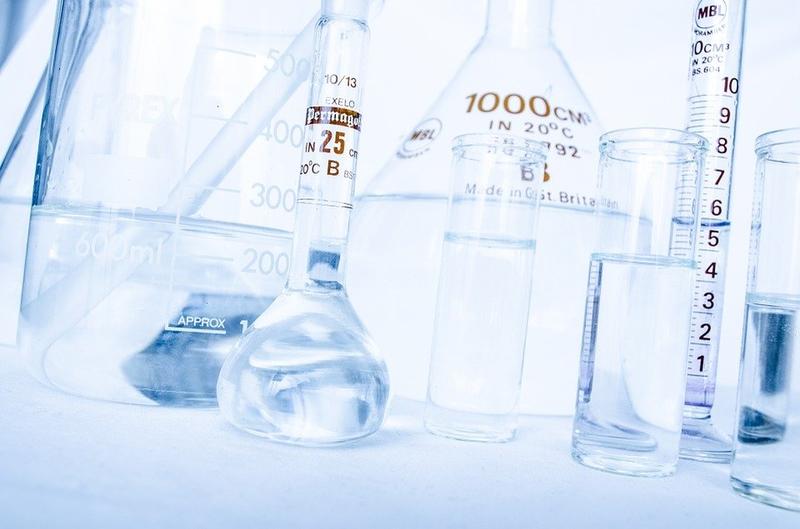What Can You Do With a Master in Biomedical Science

In science, a product is what is formed is when ii or more chemicals or raw materials react. There can be more than than one product that is formed in a chemical reaction. The chemicals or raw materials that be before the reaction are called reactants.
Information technology is important to note that the reactants and products involved in a chemical reaction are fabricated upwardly of the same atoms. Bonds betwixt atoms are created or cleaved during the chemical reactions, resulting in new substances that take makeups that are different from their reactants.
The CK-12 Foundation explains that products are the result of some blazon of chemical modify. Call back of a burning candle: The candle is transformed into a different kind of matter — water dioxide and vapor. In this case, the reactants would be the candle (comprised of its wick and wax) and oxygen, which is already nowadays in the air.
Products and Chemical Changes
In science, chemic reactions are typically expressed in the form of an equation. Pressbooks explains that an pointer pointing correct (→) signifies the reactants react to yield a product. The items on the left are the reactants, while the items on the right are the products. Plus signs can be found on both sides of the equation and betoken separate production or reactant formulas.
Sometimes, these equations must residual, significant that the number of atoms for each element must be equal on the reactant and product sides of the equation. To residual them, you may be required to change the coefficients in the equation.
Examples of Chemical Reactions
At that place are 5 basic types of chemic reactions, which vary based on how reactants interact to form a new product or products. However, it is worth noting that some reactions can fall into more one category. The Carolina Biological Supply Visitor explains them like this:
- Combination or synthesis reactions: When ii or more reactants combine to create one new product (A + B → AB)
- Decomposition reactions: When a unmarried reactant deteriorates to form two or more products (AB → A +B)
- Single-replacement reactions: When i element replaces a similar element of some other reactant compound (A + BC → AB+ C)
- Double-replacement or metathesis reactions: When (AB + CD → AD + BC)
- Combustion reactions: When a substance reacts with oxygen gas, resulting in a release of energy in the form of calorie-free and heat; these reactions must have O2 equally i of its reactants
Chemical Reactions in Everyday Life
Chemic reactions, and the products that are formed past them, are nowadays all around the states. Some of the virtually popular types of reactions are covered in biology, which encompasses all living things.
A well-known chemic reaction is cellular respiration, which the Khan Academy says is how organisms break downward glucose to create free energy. The procedure can occur with (aerobically), or without (anaerobically) without oxygen.
Whether or not it involves oxygen, both reactions yield Adenosine triphosphate (ATP). ATP is a course of energy that supports just nearly every living thing.
A 2d well-known chemic reaction is photosynthesis, which Sciencing describes equally what plants practise to convert light free energy to chemic energy. The process removes carbon dioxide from the atmosphere to create oxygen that we use to breathe.
Reactants involved in photosynthesis are light energy, water, carbon dioxide, and chlorophyll. The products are glucose or sugar, oxygen, and water.
lawrencehazies2002.blogspot.com
Source: https://www.reference.com/science/product-science-42a5f5f3908e0a76?utm_content=params%3Ao%3D740005%26ad%3DdirN%26qo%3DserpIndex
0 Response to "What Can You Do With a Master in Biomedical Science"
Postar um comentário